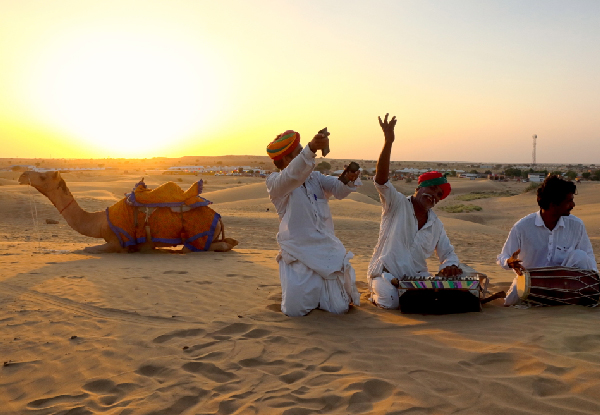Jaisalmer, also known as the ‘Golden City,’ is one of the most captivating destinations in India. With its ancient forts, desert landscapes, and cultural experiences like camel safaris and camp stays, Jaisalmer offers a unique blend of history and adventure. If you’re considering visiting but need more convincing, here’s a detailed 3-day itinerary to help you plan your trip. The city’s charm lies in its golden-yellow sandstone architecture, narrow streets, and the dominating Jaisalmer Fort, which looms over the skyline. If you’re planning a trip to India, Jaisalmer is a must-visit. This guide will provide you with all the essential details for your journey.
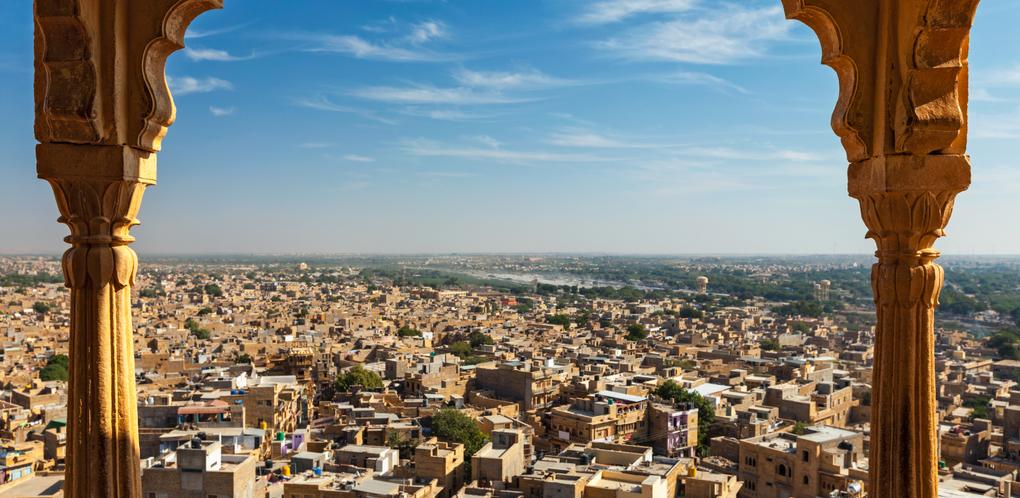
Getting to Jaisalmer
Reaching Jaisalmer can be a bit of a challenge due to its remote location in the Thar Desert, near the Pakistan border. However, here are two main ways you can travel to Jaisalmer:
1. By Train
Traveling by train is the most popular option, especially among budget travelers. Indian trains are known for being affordable, and even first-class air-conditioned coaches can cost less than $10. However, the downside is the travel time. From Delhi, it takes about 18-20 hours to reach Jaisalmer by train.
2. By Plane
For a quicker option, consider flying. While many sources claim Jaisalmer’s airport is only for military use, flights to Jaisalmer through SpiceJet from Delhi. The flight took just an hour. The cost is surprisingly affordable too—around $30.
Currently, you can only fly to Jaisalmer from Delhi or Jaipur. If you’re coming from another city, you may need to fly to Jodhpur and travel by train from there.
3-Day Jaisalmer Itinerary
Day 1: Discovering the Living City of Jaisalmer
Began at the magnificent Jaisalmer Fort, a living fort that houses not only historic structures but also vibrant shops, temples, and homes. Unlike other forts in Rajasthan, this one is truly a city within walls. It will take 3 hours to explore with the help of a guide, if you don’t want to miss the fascinating history hidden in every corner.
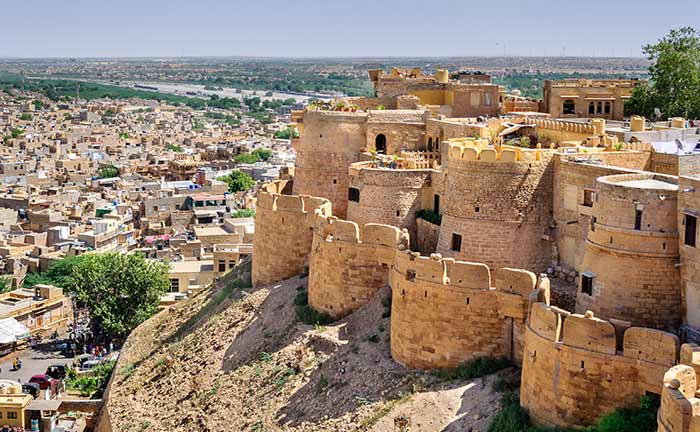
Next, walked about 10 minutes to Patwon ki Haveli, a cluster of five intricately designed havelis. Their stunning sandstone architecture reflects the glory of Jaisalmer’s golden era.
In the afternoon, visit the Jaisalmer War Museum. The museum’s closing time is 5 PM. A nominal fee grants you entry to this impressive display of military artifacts and history. The museum is easy to navigate, so no guide is needed here.
After a refreshing break at our hotel with tea and snacks, head to Gadisar Lake. Book a rowing boat and enjoyed a peaceful ride as the sun set over the lake. Your rower will share the stories about the lake’s history, and after the sunset, we wandered around the local market by the ghat, picking up some traditional accessories. End your day with a tranquil dinner at a rooftop restaurant, enjoying a beautiful view of Jaisalmer under the stars.
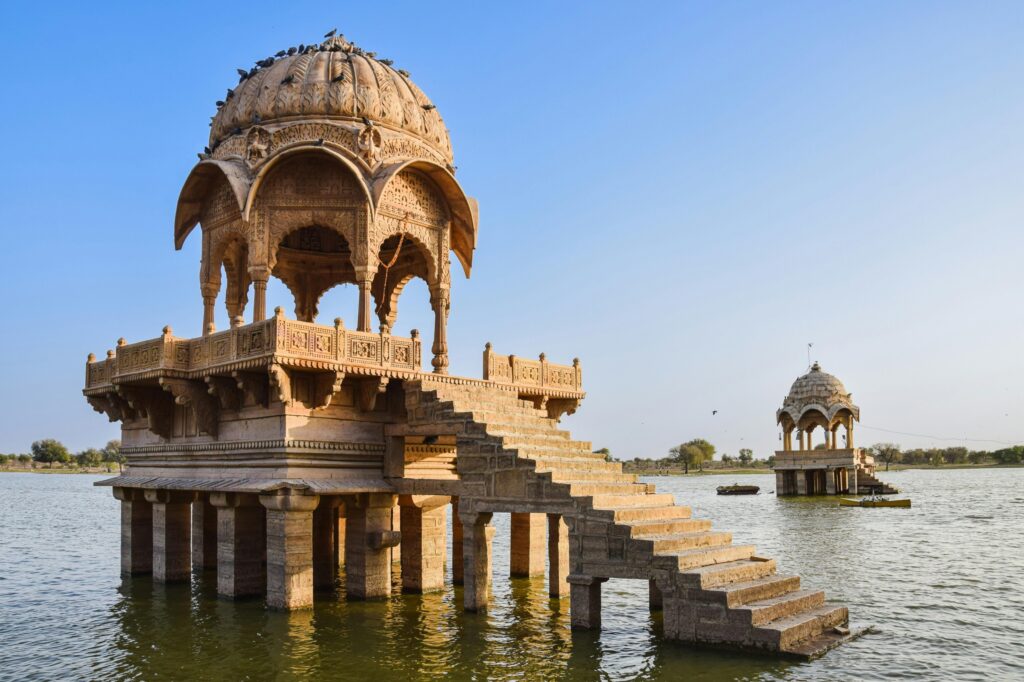
Day 2: From War Stories to Desert Adventures
Start from Bada Bagh. The sprawling garden filled with cenotaphs might not look like much at first, but with a guide, you can learn how these chhatris were built in memory of the Maharajas.
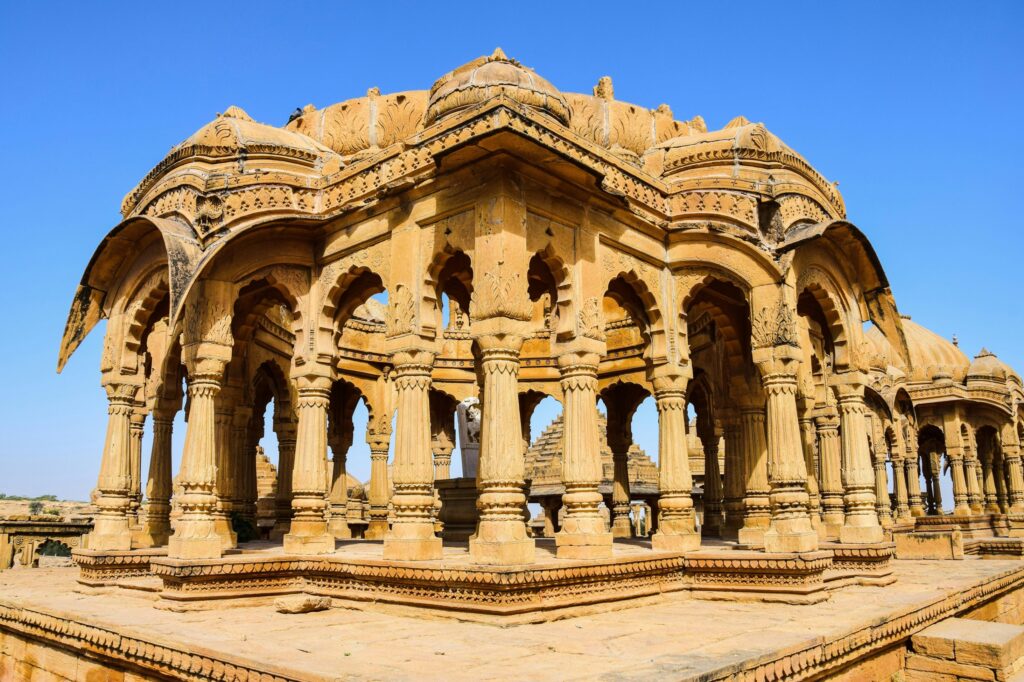
Next stop is the Longewala War Museum, which completely lived up to its reputation. The museum showcases Pakistani tanks and jeeps left behind after the attack. Watch a short but impactful 17-minute documentary that gave you a glimpse into the intensity of the battle. It will be a powerful experience, and well worth the visit. After a quick lunch stop on the way, head over to the Tanot Mata Temple, known for its miraculous history. No bomb has ever detonated in its premises, despite being bombarded during the wars. The soldiers’ reverence for this temple was palpable.
In the evening, drove to the Sam Sand Dunes for a desert adventure. After settling into our tents, set out on a thrilling Jeep safari, bouncing over dunes before switching to camels. The camel safari to a high dune just in time for a magical desert sunset. Watching the sun dip below the horizon from the middle of the Thar Desert was surreal. Returned to the camp where you will treated to an incredible cultural performance with traditional Kalbelia dancers and folk singers by a bonfire. End the night with a delicious Rajasthani dinner under the stars before retreating to your tents for some much-needed rest.

Day 3: Sunrise, Ghost Villages, and Farewells
Began with a camel cart ride into the desert to witness the sunrise. There’s something incredibly peaceful about watching the first light break over the sand dunes. After soaking in the morning tranquility, return to your tents for breakfast and checked out.
Next destination is the Khaba Fort, an eerie but fascinating place overlooking the abandoned village of Kuldhara. Both the fort and the village have an air of mystery about them, with many stories about why the village was deserted. Spend about 30 minutes at each spot, walking through the ruins and imagining what life must’ve been like centuries ago.

Before heading out of Jaisalmer, make a quick stop at the Amar Sagar Jain Temple. Its intricate architecture is stunning, a beautiful reminder of the rich history and craftsmanship of Rajasthan. Another temple worth visiting is the Lodhruva Jain Temple.
Final Thoughts
Jaisalmer is a magical place that offers a unique combination of history, adventure, and culture. Whether you’re wandering through the golden fort, riding a camel through the desert, or watching the sunset by Gadisar Lake, there’s something for everyone in this stunning city.
One thing that made our trip even smoother was the Mony app. As international travelers, we often worry about carrying enough cash, but with Mony, we could simply scan and pay at almost all shops, restaurants, and attractions. It allowed us to focus on enjoying the experience without stressing about finding ATMs or managing local currency. For anyone traveling to India, I’d highly recommend using the Mony app—it’s a game-changer!

